we have a number of new projects in the works – im hoping to release three more circuits before the end of this year – heres a preview and small overview of one of them!
underscores presents an adaption of Rob Schafer’s two_point_one_colorizer:
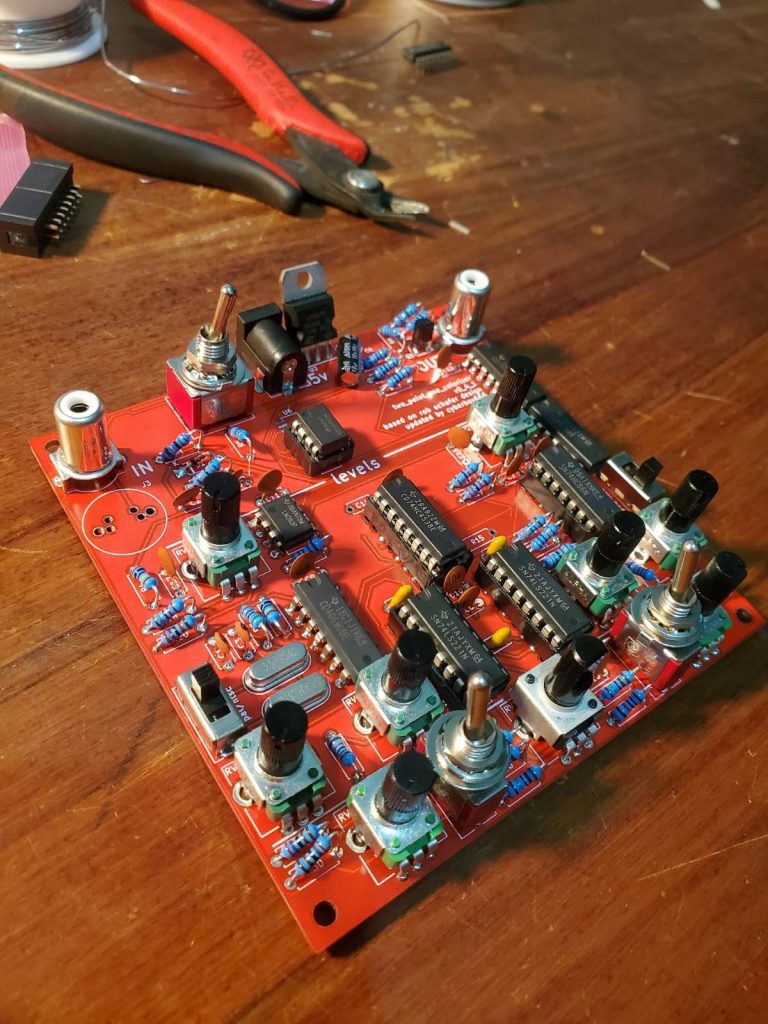
history of the project
the original circuit was designed by Rob Schafer on breadboard and shared on the facebook group Video Circuits :
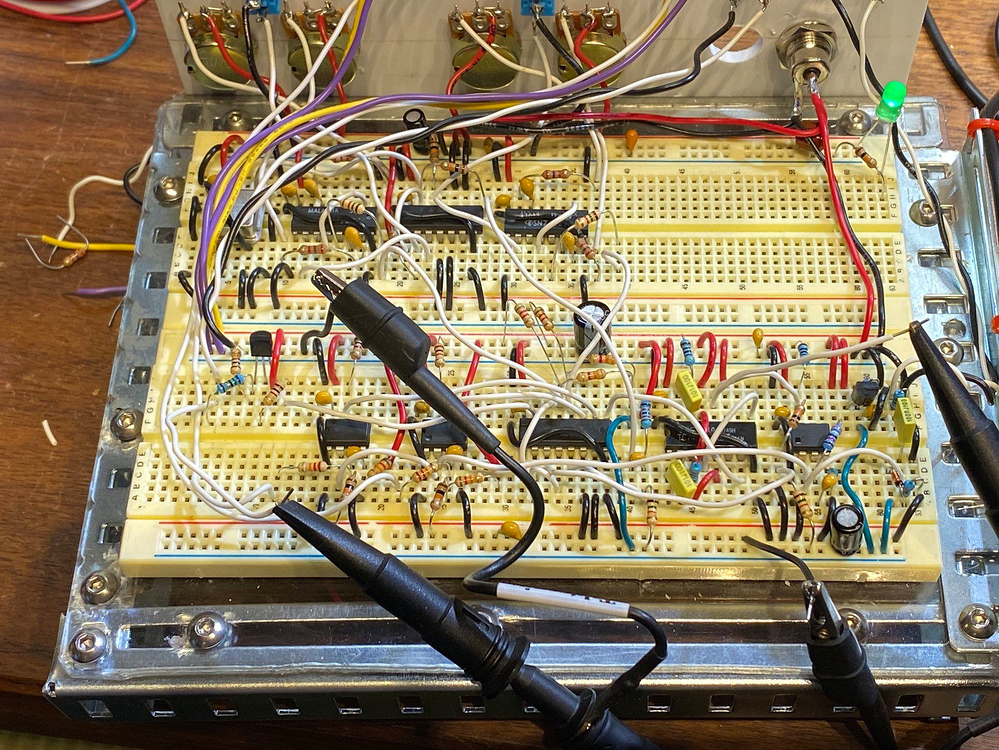
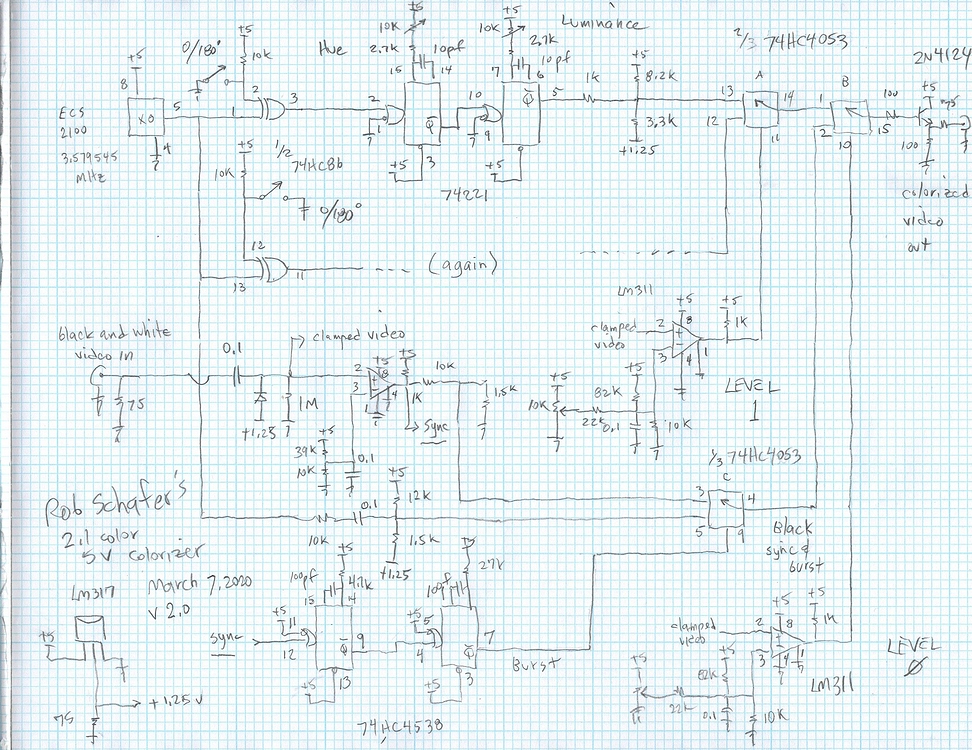
since then Rob has moved on from working with composite video – (check out his youtube channel to follow his exploration of HD analog video) – but my interest in this circuit remains!
how it works
the way this circuit creates colour is both genius and extremely hacky!
the first stage is very similar to another underscores circuit adapted from Rob Schafer – the two_comparator_effect :
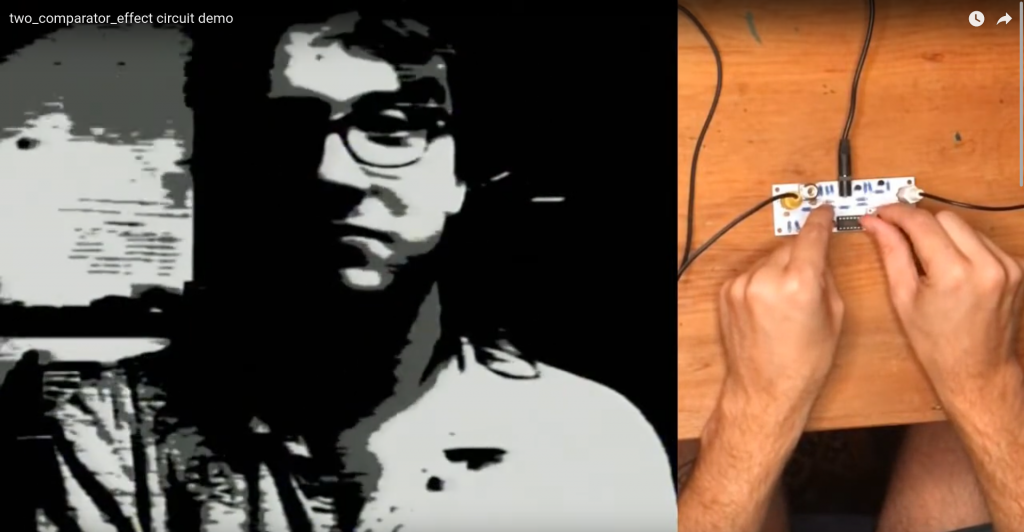
the signal passes through two comparator stages – reducing the signal down to this posterized effect with only white, grey and black visible – two_point_one_colorizer is similar but instead creates two colours plus black (hence the two point one)
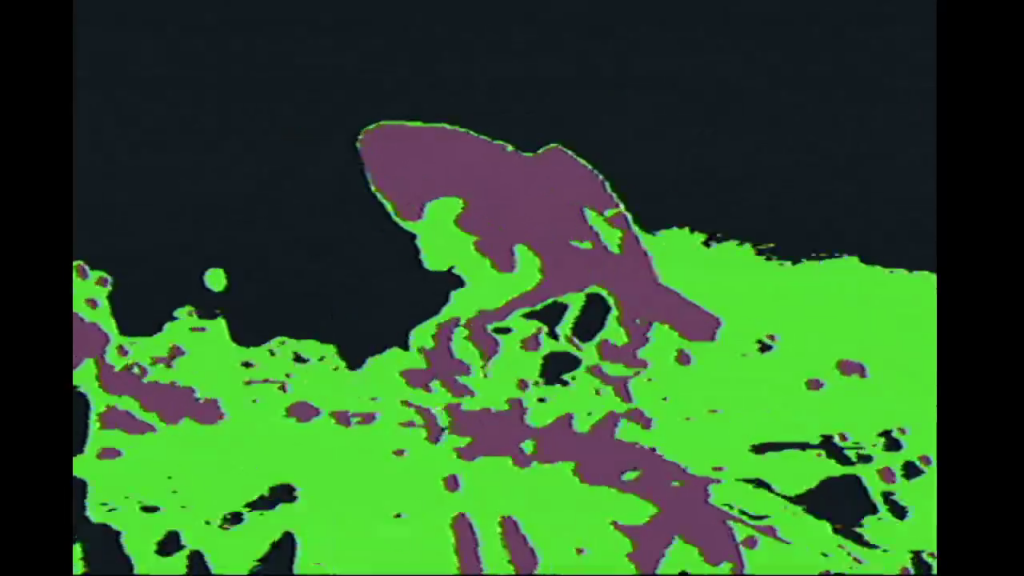
colour on composite video is created with a sub-carrier signal – an extremely fast sine wave that runs over-top of the luminance signal:

the hue is selected by the phase difference between this sub-carrier signal and the colour burst reference.
on the next stage of the two_point_one_colorizer a sub-carrier signal is approximated using high-speed monostables and overlaid over these ‘white’ and ‘grey’ portions of the comparator outputs:

monostables generate square waves with variable pulse widths -which at this speed can approximate the sub-carrier signal with variable offsets (hue) – inverters are also used to shift the offset by 180 degrees – since this approximation is not perfect some colours are easier to generate than others – and some displays are more or less picky than others.
what i love about this approach is that it is less precise and predictable than (for example) generating colours with an rgb encoder – you end up getting some really unexpected results – and also some great colour glitches as the tv decoders struggle to make sense of the out-of-spec signal:
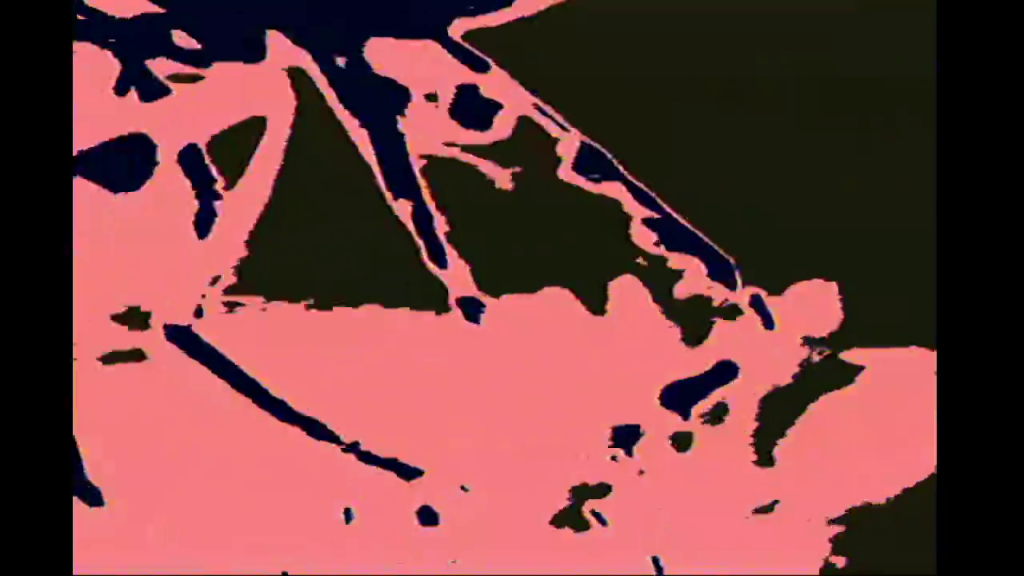
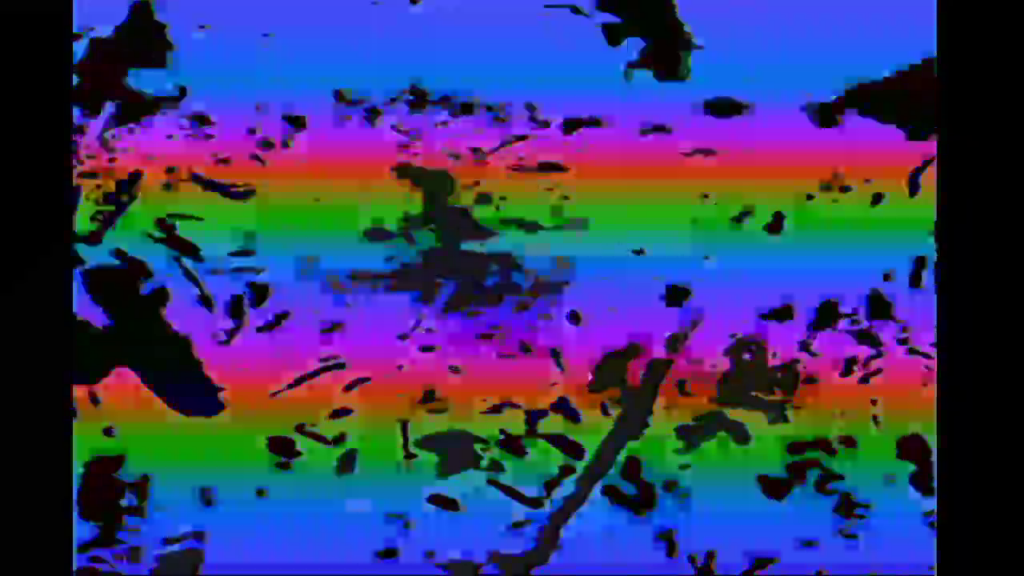
the adaption
back in 2020 i made a start trying to adapt this design to pcb with help from Rob and others from the scanlines community – a few of the mods made to the original design include:
- simplifying the sync and burst pulse portions by using lm1881 instead of doing this more ‘manually’
- swapping out the monostables for another ic – similar in spec but around 1/10th of the price (can still swap out for robs original ic if you would like!)
- adding video by-pass toggle – making the circuit more usable in larger signal chains
- adding more control over colour selection – a master colour offset that changes both channels together and sub-carrier amplitude that changes colour saturation
- (attempting to) adapt the circuit to also work on pal cvbs – adding a switch to select sub-carrier frequency and also logic to implement Phase-Alternating-Lines
PAL troubles
i got a bit stuck on the PAL compatible part of the mod and ended up shelving this project for a bit while i focused on working towards the shop launch and polishing other projects..
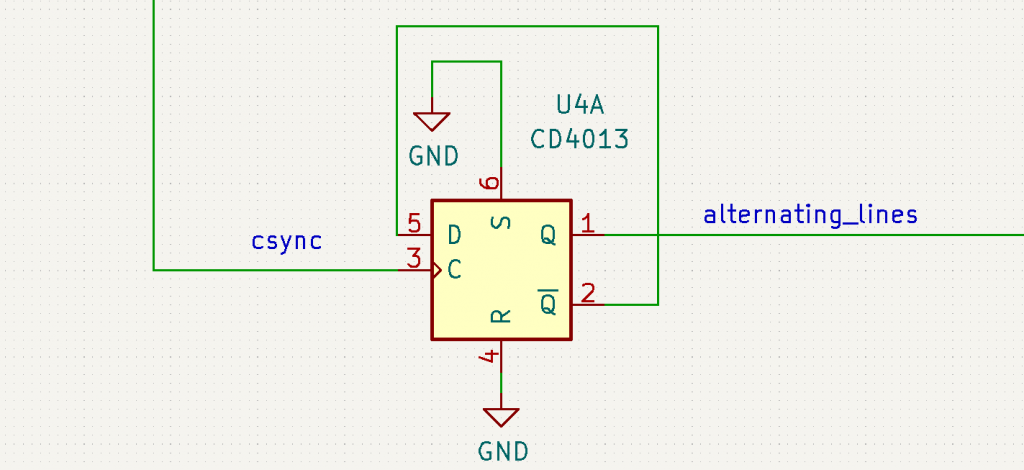
..im still not sure that the PAL version is perfect – the Phase-Alternating-Lines mod never quite worked how i expected and the range of colours seems a bit less (could be just due to PALs faster sub-carrier though since the monostables are already being pushed to limits with NTSC). im sure there will be some displays that wont show any colours for PAL but to my surprise the three monitors i tested it on in my studio all worked with NTSC and PAL (a crt tv, a small car-reversing lcd and a easycap capture card)
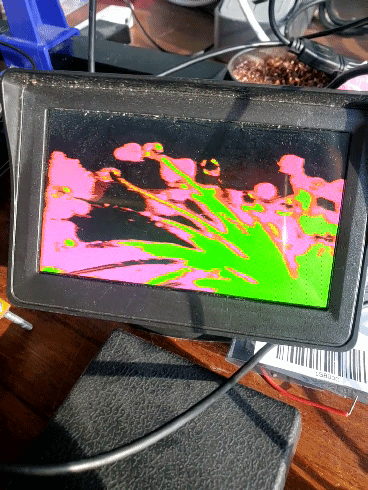
the nature of this project is hacky and experimental so it is already wishful thinking to have it running consistently on all displays – I think the current version would be a useful tool in the studio of many composite video artists and im excited to see it out in the world!